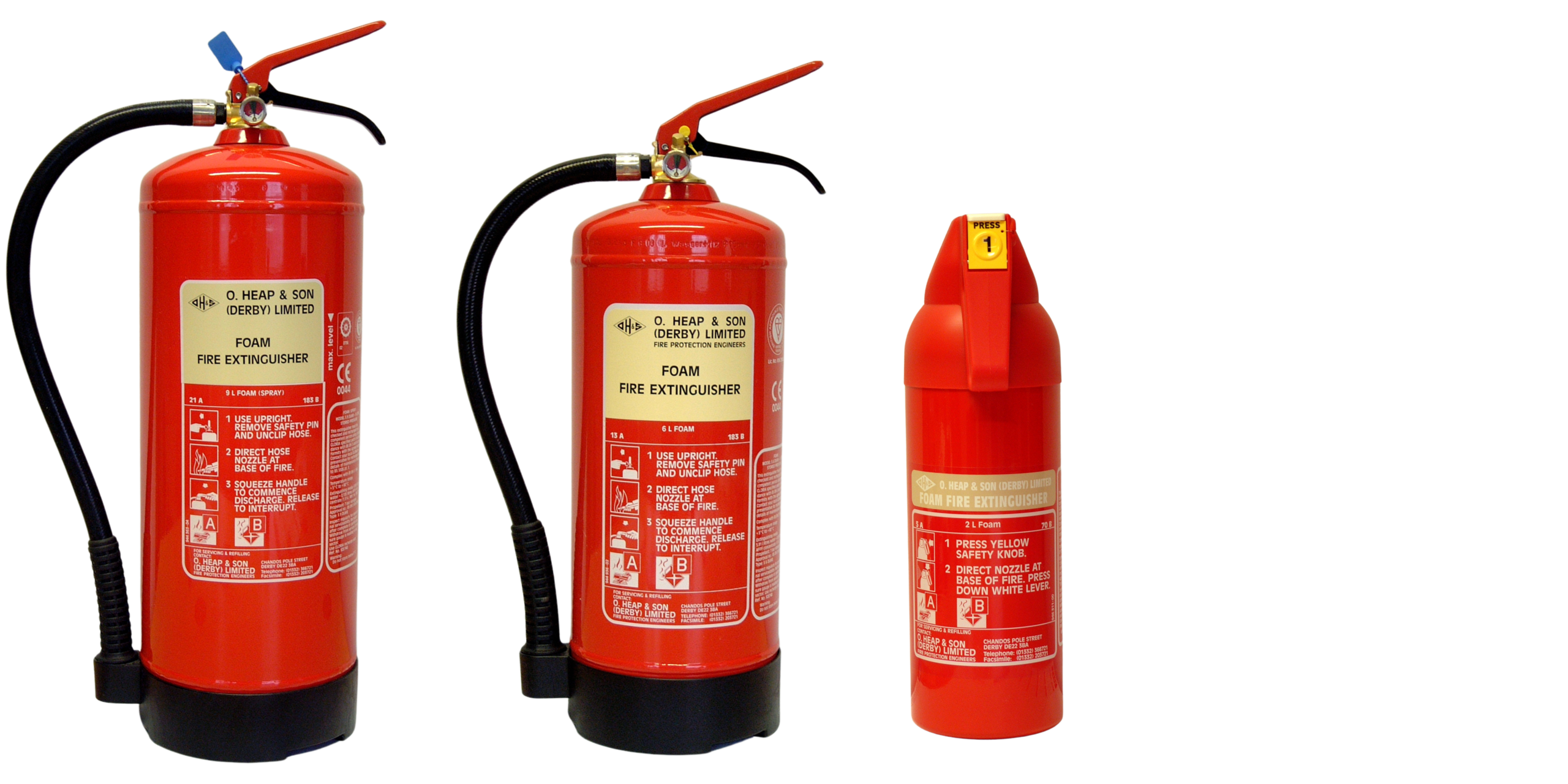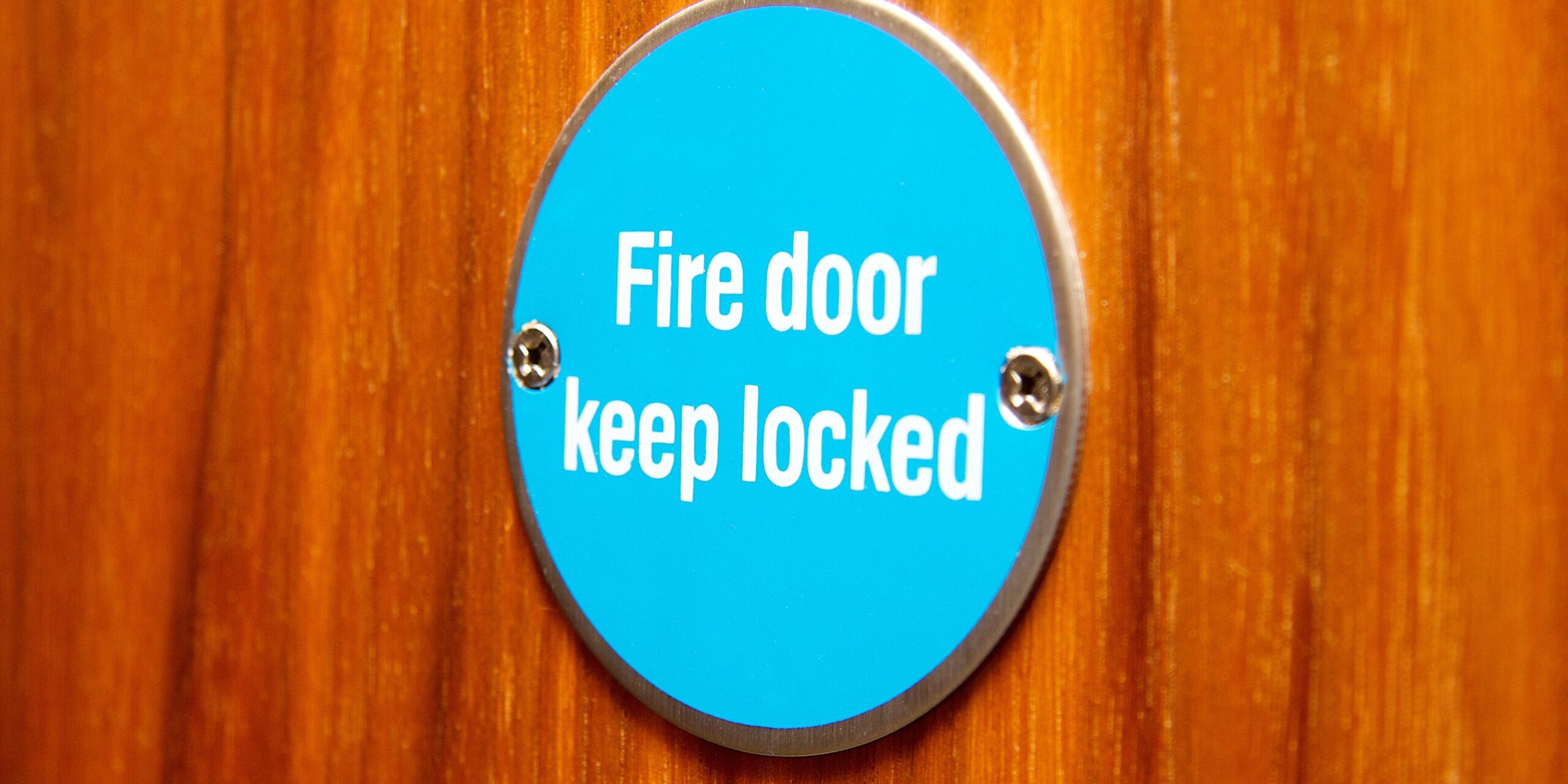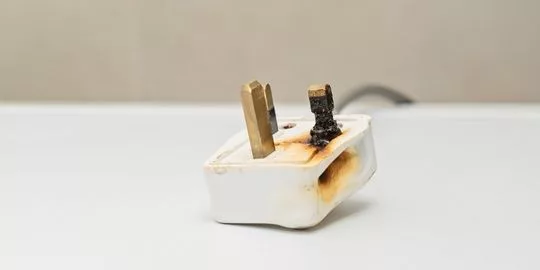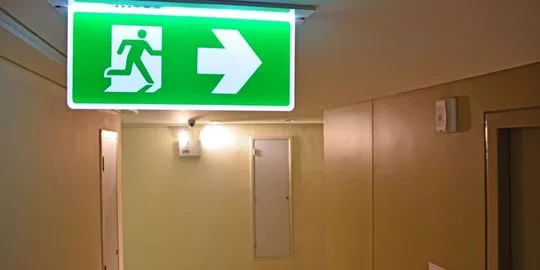Care homes are places where individuals, often elderly or vulnerable, reside to receive care and support. It is essential that we prioritise care home fire safety. Vulnerable residents are at high risk of injury or death in the event of a fire. In this blog, we will discuss the importance of fire safety in care homes. In addition, the regulatory requirements for care home fire safety, and products that can be used to alert residents and extinguish fires.
What Is A Care Home?
A care home is a place where individuals can live and receive support and care for their daily needs. These individuals may be elderly, disabled, or have mental health issues. Care homes can be either residential or nursing homes, and they can be run by private companies, charities, or local authorities. Residential care homes provide accommodation, meals, and assistance with daily living activities, such as bathing, dressing, and administering medication. Nursing homes, on the other hand, provide additional medical support, such as nursing care and rehabilitation services. Care home fire safety is of vital importance!

Who Is Vulnerable In A Care Home?
Residents of care homes are particularly vulnerable to fire due to age, mobility, and health issues. Many elderly residents have reduced mobility. This can make it difficult for them to evacuate in the event of a fire. Additionally, some residents may have cognitive impairments. This makes it harder for them to understand and respond to care home fire safety instructions. Both residents and care home staff, who may be responsible for assisting residents during an evacuation are in danger. Both are equaly at risk of injury or death in the event of a fire. Therefore, it is crucial that we prioritise care home fire safety to prevent such risks.
Care Home Fire Alarm Systems
Fire alarm systems are an essential part of care home fire safety. They are designed to detect fires as early as possible and provide an audible warning to occupants of the premises. All care homes are required to have appropriate fire detection and fire alarm systems. Fire alarms must be audible throughout the building, regularly tested and maintained. The type of fire alarm system required for a care home will depend on a range of factors. Typically, the size of the building, the layout, and the number of occupants.
All staff and residents should be trained in the use of the system and in fire safety procedures. Secondly, regular fire drills should be carried out to ensure that everyone knows what to do in the event of a fire.

Care Home Fire Extinguishers
Care homes must also have appropriate fire-fighting equipment. This includes fire extinguishers, fire blankets and fire alarms.
The type of fire extinguisher needed in a care home will depend on the nature of the fire risk present. There are different types of fire extinguishers designed to tackle different types of fires. Also, staff should be trained in the use of these extinguishers. The following are the types of fire extinguishers commonly used in care home fire safety:
- Water fire extinguishers.
- Labelled with a red band.
- Suitable for tackling Class A fires, which involve flammable solids, such as wood, paper, and cloth.
- Carbon dioxide (CO2) fire extinguishers.
- Labelled with a black band.
- Suitable for tackling Class B and electrical fires.
- Class B fires involve flammable liquids such as oil and petrol.
- Class E electrical fires involve flammable electricals such as PCs, electrical heaters and plug sockets.
- Dry powder extinguishers.
- Labelled with a blue band.
- Versatile and can be used to tackle Class A, B, and C fires.
- They are also suitable for Class E fires, which involve electrical fires.
- Foam extinguisher.
- Labelled with a cream band.
- Suitable for Class A and Class B fires.
- The foam forms a blanket over the fire, smothering it and preventing it from spreading.
The type of fire extinguisher needed in a care home will depend on the specific fire risks present. A fire risk assessment should be carried out to determine the most appropriate type and a number of fire extinguishers required in the care home. It is also important to ensure that staff are properly trained in the use of fire extinguishers. Also, that the extinguishers are regularly checked and maintained to ensure they are in good working order.

Care Home Fire Doors
Fire doors are an essential part of care home fire safety. They are designed to prevent the spread of fire and smoke, providing a safe means of escape for residents and staff.
In a care home, fire doors should be installed in accordance with the relevant regulations and standards. This includes the Regulatory Reform (Fire Safety) Order 2005 and the British Standard BS 8214:2016. Fire doors should be tested and certified to ensure that they meet the required standards.
Fire doors should be made of fire-resistant materials. Generally, this includes timber or steel. Also, fire doors should be fitted with intumescent seals that expand when exposed to heat. Intumescent seals work by filling the gap between the door and the frame and preventing smoke and fire from passing through. We recommend fire doors are also fitted with automatic door closers to ensure that they close properly and form a barrier against fire and smoke.
Obviously, it is important to ensure that fire doors are kept clear of obstructions and that they are not wedged open. During a fire, a wedge will compromise its effectiveness. Fire doors should also be properly maintained to ensure that they remain in good working order. Any damage or defects should be repaired promptly.
Staff should ensure that fire doors are properly maintained and that they are not obstructed.

Fire Risk Assessment
A fire risk assessment is a critical component of care home fire safety. It involves:
- Identifying potential fire hazards.
- Assessing the risks associated with those hazards
- Implementing measures to reduce those risks.
- Conduction by a qualified and experienced fire risk assessor.
What is a Fire Risk Assessment?
A fire risk assessment is a systematic and comprehensive evaluation of the potential fire hazards in a building or premises. This measures:
- The likelihood of a fire occurring.
- The measures in place to prevent fires.
- People who need protecting in the event of a fire.
The assessment aims to identify any potential care home fire safety risks and to implement appropriate measures to minimise or eliminate them. Generally, this ensures that people are adequately protected in the event of a fire.
The fire risk assessment should be carried out by a competent person, who has the necessary knowledge, training, and experience to identify potential hazards and assess the risk of fire. This could be the owner or manager of the premises, or a specialist fire safety consultant.
The assessment should consider a range of factors, such as:
- The nature of the building.
- The building’s use.
- The materials used in the construction.
- The location of fire-fighting equipment.
- The availability of fire-fighting equipment.
- The presence of flammable substances.
- The care home fire safety measures in place.
- Fire alarms.
- Smoke detectors.
- Sprinklers.
- Emergency exits.
Once the assessment has been carried out, the responsible person should develop an action plan to address any identified risks and to ensure that appropriate care home fire safety measures are in place. The action plan should be regularly reviewed and updated to reflect any changes in the building or its use.
It is important to note that the fire risk assessment is a legal requirement in the UK under the Regulatory Reform (Fire Safety) Order 2005. Also, the assessment must be carried out by the responsible person, and failure to comply with the requirements of the order can result in fines or even imprisonment.

Fire Risks and Prevention (Cooking, Electrical Equipment & Smoking)
We are measuring basic care home fire safety into three main categories: cooking, electrical equipment, and smoking. Proper prevention measures should be put in place to mitigate these risks and ensure the safety of residents and staff.
Cooking: The kitchen in a care home can be a significant fire risk.
- Staff should be trained on safe cooking practices.
- This includes keeping the stove and surrounding areas clean.
- Ensuring that pans are not left unattended.
- Avoiding the use of loose clothing near the stove.
- A fire blanket and a suitable fire extinguisher should be easily accessible in the kitchen in case of a fire.
- Staff should ensure that cooking appliances and equipment are regularly maintained and inspected.
Electrical equipment: Electrical equipment, such as heating devices, lighting, and medical equipment, can pose a significant fire risk in a care home.
- Staff should ensure that electrical equipment is regularly checked and maintained.
- Maintenance is done to prevent electrical faults.
- Electrical sockets should never be overloaded with too many appliances.
- Electrical appliances should also be turned off when not in use.
Smoking: Smoking is a common cause of fires in care homes.
- Smoking should be prohibited inside the building.
- Designated smoking areas should be established outside the building.
- This should be kept away from flammable materials.
- Residents who smoke should be provided with proper ashtrays.
- Cigarette butts should be disposed of properly.
In addition to these specific prevention measures, all care homes should have a comprehensive fire safety plan in place. Including:
- A fire risk assessment.
- A fire evacuation plan.
- Regular fire drills.
- Proper staff training.
- Training in fire safety procedures.
- The use of fire extinguishers.
- Evacuation procedures.

The Health and Social Care Act (2008)
The Health and Social Care Act (2008) outlines the responsibilities of care providers. This ensures the health, safety, and welfare of residents. Also, this includes the provision of appropriate care home fire safety measures. These measures help to prevent the risk of harm to residents, staff, and visitors.
What is the Health and Social Care Act (2008)?
The Health and Social Care Act of 2008 is a UK law. A law that aims to modernise and improve the delivery of health and social care services in England. The act brought about significant changes in the way health and social care services were commissioned, provided, and regulated.
One of the key changes introduced by the act was the creation of the Care Quality Commission (CQC). Subsequently, the CQC are responsible for regulating and inspecting health and social care services in England. Ensuring that care homes meet national standards of quality and safety.
The act also established a new system for commissioning health services. Giving responsibility for commissioning services passing from Primary Care Trusts to Clinical Commissioning Groups (CCGs). Consequently, the aim was to give local health professionals greater control over the services they provide and to encourage greater collaboration between health and social care providers.
Finally, the act introduced greater patient choice and empowerment. Patients are given more control over their own healthcare and greater access to information about healthcare providers.

The Care Home Regulations Act (2001)
The Care Home Regulations Act (2001) requires that all care homes have appropriate fire safety measures in place. This includes fire precautions, fire detection and alarm systems, fire-fighting equipment, and emergency lighting.
What is the Care Home Regulations Act (2001)?
The Care Homes Regulations Act of 2001 is a UK law. This UK law sets out the standards that care homes must meet in order to provide safe and high-quality care for their residents. The act covers a range of issues related to care homes. Including
- Staffing.
- Accommodation.
- Health and safety
- Quality of care.
The act sets out a range of standards that care homes must meet in order to provide safe and high-quality care. For example,
- Care homes must ensure that they have adequate staffing levels to meet the needs of their residents
- Staff must have the necessary skills and qualifications to provide safe and effective care.
- Care homes must also provide suitable accommodation, with appropriate facilities and equipment.
- Care Homes must ensure that residents receive appropriate healthcare and support.
The Care Homes Regulations Act has been revised several times since it was first introduced. With the aim of improving standards of care and ensuring that care homes provide safe and high-quality care for their residents. The act has helped to raise standards of care in care homes. This ensures that vulnerable people receive the support and care they need to live safely and with dignity.

The Regulatory Reform Fire Safety Order (2005)
The Regulatory Reform Fire Safety Order (2005) requires that all care homes conduct a fire risk assessment. Once this is carried out, we must implement appropriate measures to mitigate any identified risks. This includes:
- Ensuring that staff are trained in fire safety.
- Emergency procedures are in place and regularly practised.
What is the Regulatory Reform Fire Safety Order (2005)?
The Regulatory Reform Fire Safety Order of 2005 is a UK law that sets out the fire safety duties of businesses, landlords, and other responsible persons. Generally, the order aims to reduce the risk of fire and improve the safety of people in non-domestic premises, such as workplaces, shops, and public buildings.
Also, under the order, the responsible person must carry out a fire risk assessment of the premises and take steps to eliminate or reduce the risk of fire. This includes:
- Identifying potential hazards.
- Ensuring that fire safety equipment is in place.
- Ensuring that fire safety equipment is working properly.
- Provide adequate training.
The order places a strong emphasis on prevention. Additionally, the aim is to reduce the likelihood of a fire starting in the first place. Also, emergency plans and procedures must be in place. Regular fire drills must be carried out to ensure that occupants of the premises know what to do in an emergency.
The Regulatory Reform Fire Safety Order applies to all non-domestic premises in England and Wales, and failure to comply with the requirements can result in fines or even imprisonment in serious cases.
The order has helped to improve fire safety in non-domestic premises and reduce the risk of fires starting or spreading, ultimately improving the safety of those who use these premises.

Conclusion
In conclusion, fire safety is of utmost importance in care homes, where elderly and vulnerable residents reside. The residents’ reduced mobility and cognitive impairments make them particularly susceptible to injury or death in the event of a fire. To prevent this, care homes should have an appropriate fire alarm system and fire-fighting equipment in place, and their staff should be trained in their use. Fire doors should be installed, tested, and certified in accordance with regulations to prevent the spread of fire and smoke.
Additionally, regular fire risk assessments should be carried out to identify potential hazards and ensure that appropriate measures are in place to prevent or mitigate them. By prioritising care home fire safety, we can protect the lives and well-being of our vulnerable residents and their caregivers.